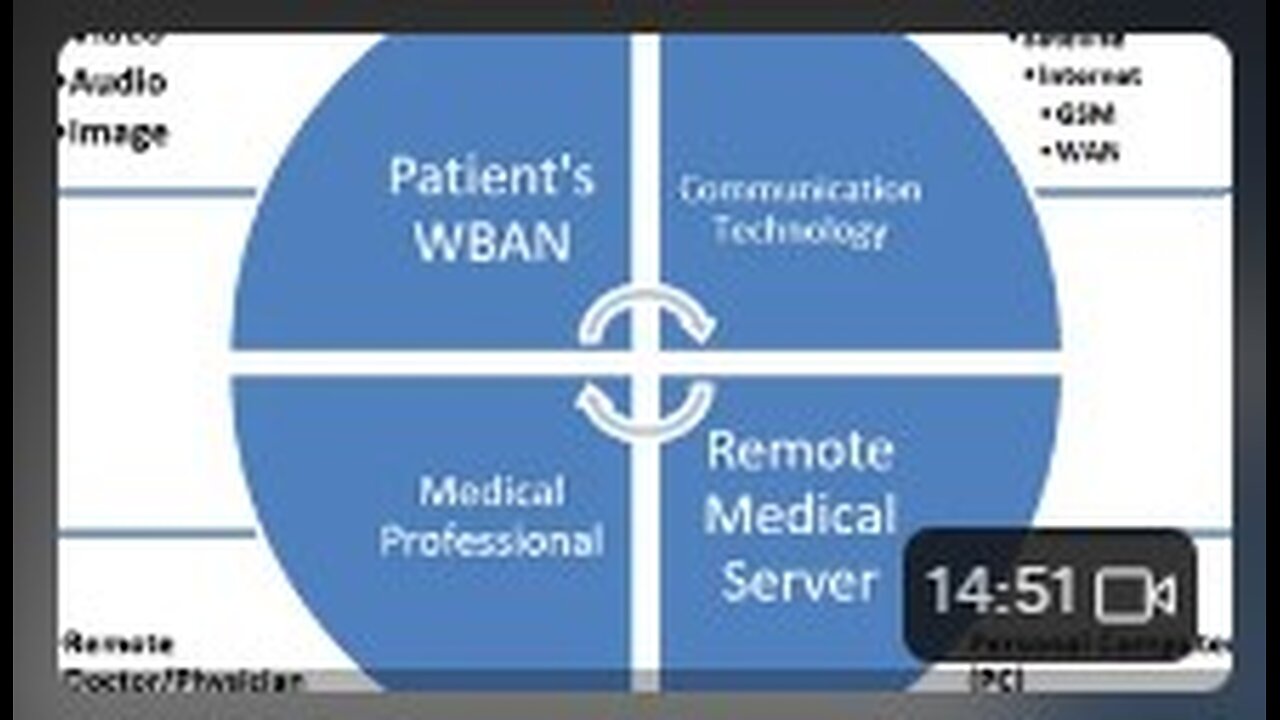Premium Only Content

Neurokit Healthcare 1-4
https://ko-fi.com/psinergy
Come join us for many stem cells and groovey tunes!
~
https://x.com/dr_edwardgroup/status/1907869168696750194
https://neuropsychology.github.io/NeuroKit/introduction.html
https://link.springer.com/article/10.3758/s13428-020-01516-y
Neurophysiological signal processing involves using algorithms to analyze and enhance brain activity signals (like EEG and fMRI) recorded from the nervous system, ultimately aiding in understanding brain mechanisms and identifying patterns related to various states and conditions.
https://neuropsychology.github.io/NeuroKit/
open source python toolbox
In the context of Body Area Networks (BANs), Python is used for developing and managing software applications, simulating network behavior, and potentially implementing telecare systems, leveraging its flexibility and ease of use
https://www.mdpi.com/1424-8220/21/16/5504
https://dl.acm.org/doi/abs/10.1145/3345768.3355939
https://dl.acm.org/doi/proceedings/10.1145/3345768
ISO/IEEE 11073 standard
https://en.wikipedia.org/wiki/ISO/IEEE_11073_Personal_Health_Data_Standards
https://www.iso.org/committee/6266604.html
https://www.iso.org/committee/54960.html
DRL-enabled discrete-event network simulator
Deep Reinforcement Learning (DRL) algorithms combine reinforcement learning with deep neural networks to enable agents to learn complex tasks from raw input data, such as pixels, without manual feature engineering. Key algorithms include Deep Q-Networks (DQN), Policy Gradient Methods, and Actor-Critic methods.
A Deep Q-Network (DQN) is a reinforcement learning algorithm that uses deep neural networks to approximate the Q-value function, enabling agents to learn optimal policies in complex environments where traditional Q-learning with tables becomes impractical.
In the context of reinforcement learning, a Q-value function, or action-value function, estimates the expected cumulative reward for taking a specific action in a given state and then following a particular policy.
https://rumble.com/user/Psinergy?q=biopython
eHealth" refers to the use of digital technologies, like computers and the internet, to deliver and manage healthcare information and services, encompassing areas like electronic health records, telemedicine, and online health education.
https://en.wikipedia.org/wiki/Fast_Healthcare_Interoperability_Resources
HL7 is a set of international standards for the exchange of electronic health information (EHI) between healthcare software applications. It provides a common language and framework for ensuring interoperability and data consistency in the healthcare industry.
https://onlinelibrary.wiley.com/doi/epdf/10.1002/wcm.884
internet of behaviors
The Electronic Integrated Disease Surveillance System (EIDSS) is a software system designed to strengthen monitoring and prevention of human and animal diseases within the "One Health" concept, facilitating compliance with the International Health Regulations (IHR) 2005.
https://www.iec.ch/system/files/2023-10/wsdcombinedpdf_0.pdf
https://iec.ch/standards-development
Point-of-care (PoC) medical device communication, governed by standards like ISO/IEEE 11073, enables seamless data exchange between devices and healthcare systems, facilitating better patient care and improved workflows.
https://x.com/ET_sharing/status/1908605797384282542
https://pmc.ncbi.nlm.nih.gov/articles/PMC7909758/
COV WBAN
https://www.techscience.com/cmc/v70n2/44669/html
https://www.mdpi.com/2224-2708/12/2/20
https://www.mdpi.com/1424-8220/23/4/2042
https://www.sciencedirect.com/science/article/pii/S1532046421000605
human activity recognition radar
Mark 5:36
amen
-
 15:02
15:02
Demons Row
11 hours ago $1.48 earned8 Hardest Patches to Earn in 1% Motorcycle Club Culture 💀🏍️
13.5K3 -
 10:27
10:27
Adam Does Movies
20 hours ago $0.43 earnedShelby Oaks - Movie Review
2.75K7 -
 6:08
6:08
Blackstone Griddles
13 hours agoAlmost Famous French Toast on the Blackstone Camping Griddle
4.34K -
 LIVE
LIVE
BEK TV
23 hours agoTrent Loos in the Morning - 10/23/2025
131 watching -
 LIVE
LIVE
The Bubba Army
21 hours agoImmigrant Trucker KILLS Again! - Bubba the Love Sponge® Show | 10/23/25
1,890 watching -
 LIVE
LIVE
Side Scrollers Podcast
3 days ago🔴FIRST EVER RUMBLE SUB-A-THON🔴DAY 3🔴WAKE YOUR ASS UP!
1,108 watching -
 19:16
19:16
Jasmin Laine
16 hours agoCBC Gets FACT-CHECKED By Guest—Carney BEGS Poilievre For Help
17.1K14 -
 8:50
8:50
The Shannon Joy Show
14 hours agoBREAKTHROUGH Cancer Treatments With Dr. Makis
6.95K3 -
 9:10
9:10
Faith Frontline
13 hours agoMatthew McConaughey Just Said What No Celebrity Dares to About Jesus
10.2K2 -
 27:03
27:03
Take FiVe - His Glory
1 day agoEp 2112: Sam Anthony: How Citizen Journalism is Replacing Legacy Media | Take Five
14K2